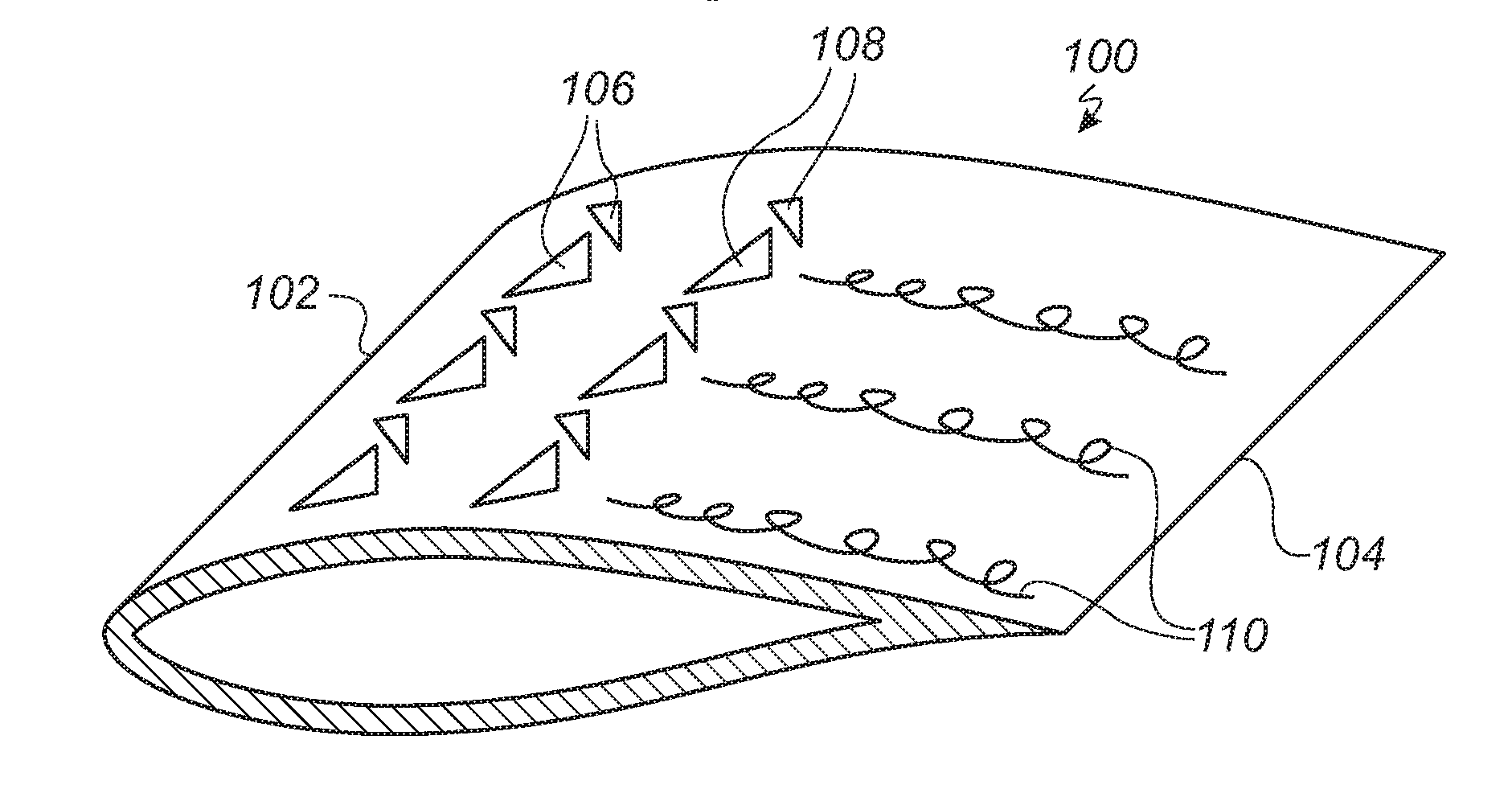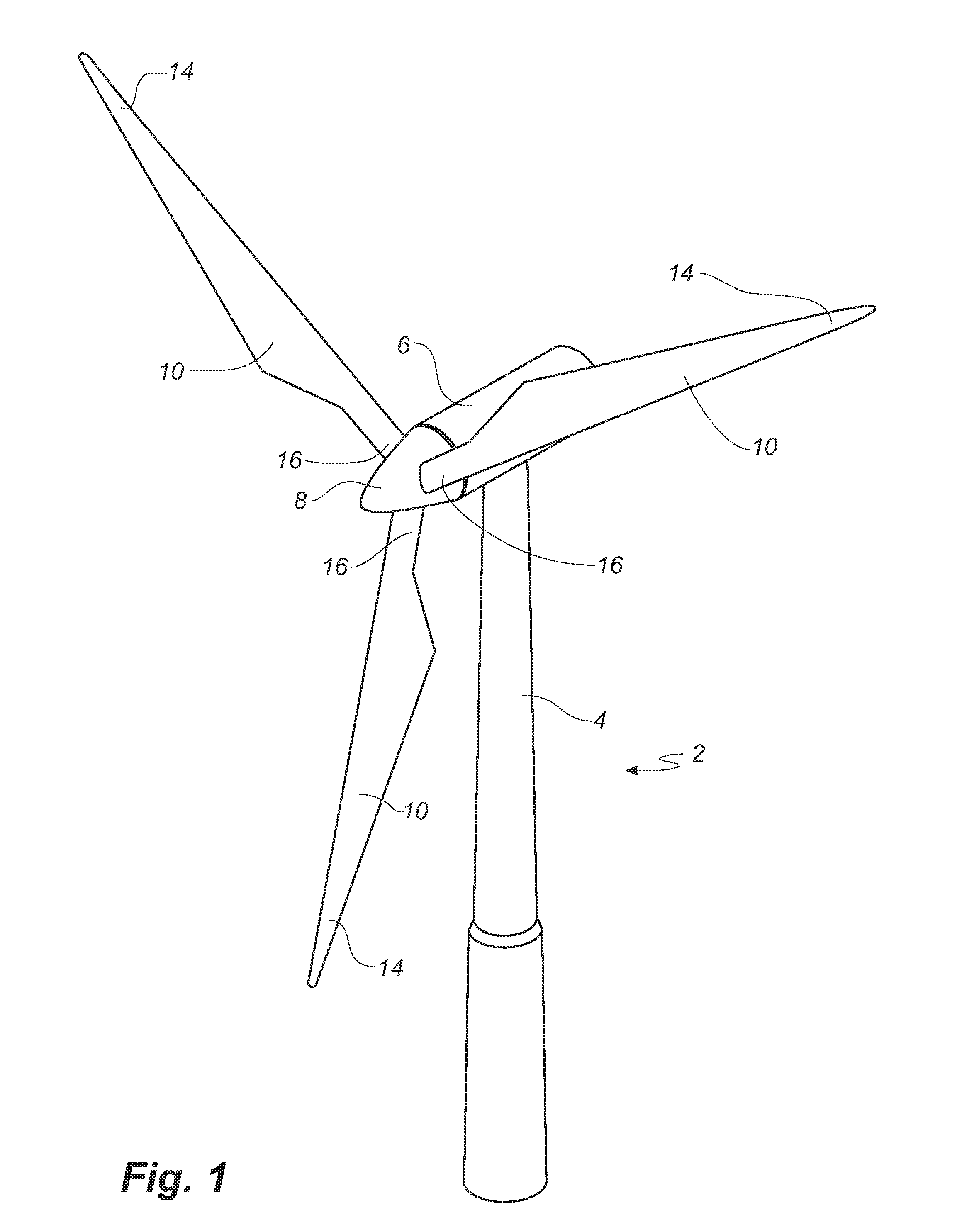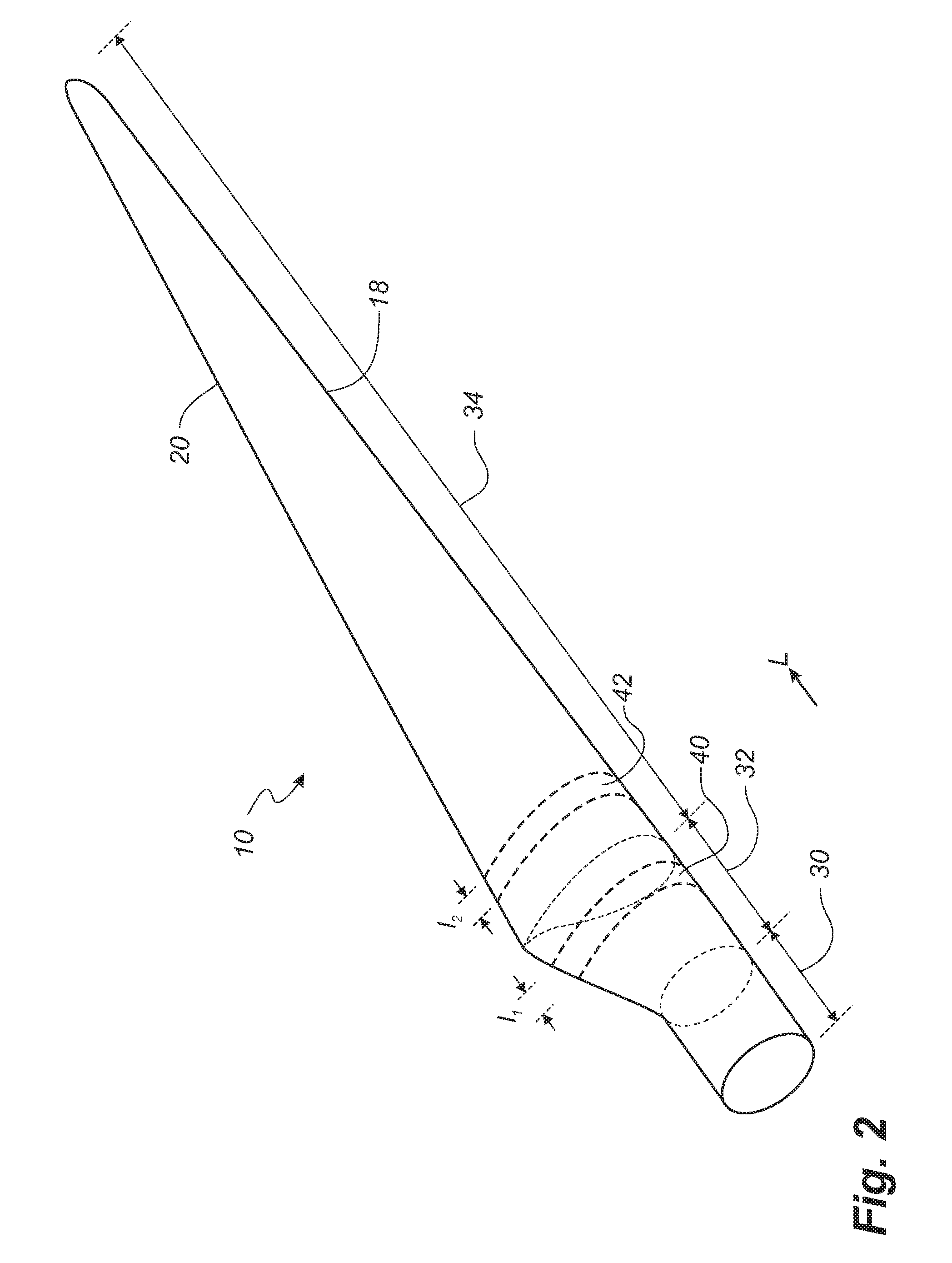Blade for a rotor of a wind turbine provided with barrier generating means
a technology of wind turbine and generating means, which is applied in the direction of wind energy generation, mechanical equipment, machines/engines, etc., can solve the problems of increasing the drag (and in some cases even the lift-to-drag ratio) of the blade, and achieves the effect of effectively preventing cross-flow and not impairing the functionality of the airfoil region
- Summary
- Abstract
- Description
- Claims
- Application Information
AI Technical Summary
Benefits of technology
Problems solved by technology
Method used
Image
Examples
first embodiment
[0052]FIG. 4 shows a blade section 100 (i.e. of the first zone or the second zone) of a first embodiment with barrier generating means according to the invention. The profile has a leading edge 102 and a trailing edge 104, and a first set of vortex generators 106 and a second set of vortex generators 108 are arranged on the suction side of the blade section 100. The vortex generators 106, 108 are here depicted as being of the vane type, but may be any other type of vortex generator. The vortex generators 106, 108 generate a barrier of airflow consisting of coherent turbulent structures, i.e. vortices propagating at the surface of the blade towards the trailing edge 104, which prevent cross-flows of detached airflow to propagate beyond the zone in which the vortex generators 106, 108 are arranged.
second embodiment
[0053]FIG. 5 shows a profile 200 of a second embodiment with barrier generating means according to the invention. In this embodiment, the barrier generating means consists of a number of ventilation holes 206 for blowing or suction between an interior of the blade and an exterior of the blade. The ventilation holes 206 can be utilised to create a belt of attached flow. The air vented from the ventilation holes 206 are used to energise and re-energise the boundary layer in order to maintain the flow attached to the exterior surface of the blade. The belt of attached flow acts as a barrier to a separated cross-flow by “catching” the cross-flow, which is thus forced to join the attached flow towards the trailing edge 204 instead of flowing outwards towards the tip end. The ventilation holes 206 are in this embodiment arranged substantially tangentially to the surface of the profile 200. The ventilation holes 206 may be provided as a series of holes in the longitudinal direct ion of the...
fourth embodiment
[0055]FIG. 7 shows a profile 400 of a fourth embodiment with barrier generating means according to the invention. In this embodiment, the barrier generating means consists of a slat 406 arranged at the leading edge 402 of the profile 400. The slat points downwards towards the pressure side of the profile 402 and is utilised to create a local change in the inflow angle and airfoil lift, thereby causing the flow to remain attached to the surface of the blade. This attached “tunnel” for the flow creates a barrier, where the cross-flow is caught and thus forced to join the attached flow towards the trailing edge 404 instead of flowing outwards towards the tip end.
PUM
 Login to View More
Login to View More Abstract
Description
Claims
Application Information
 Login to View More
Login to View More - R&D
- Intellectual Property
- Life Sciences
- Materials
- Tech Scout
- Unparalleled Data Quality
- Higher Quality Content
- 60% Fewer Hallucinations
Browse by: Latest US Patents, China's latest patents, Technical Efficacy Thesaurus, Application Domain, Technology Topic, Popular Technical Reports.
© 2025 PatSnap. All rights reserved.Legal|Privacy policy|Modern Slavery Act Transparency Statement|Sitemap|About US| Contact US: help@patsnap.com



